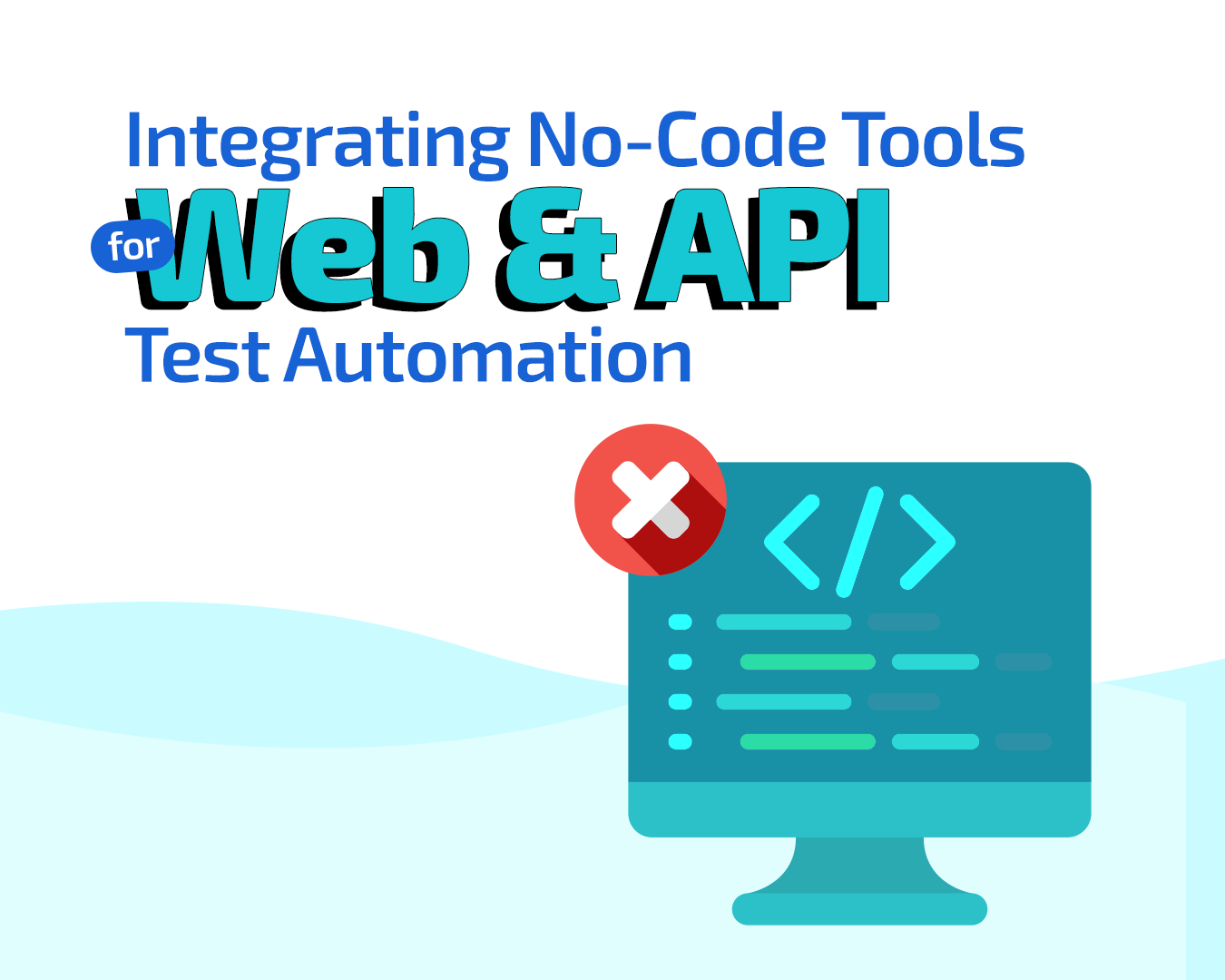
Developing a software product takes a significant amount of time, and testing the product is no exception. The market eagerly awaits solutions to their problems, and as a product owner or software developer, you are already hard at work on a solution. What better way to fast-track your product delivery than strategically introducing no-code tools into your test automation process? By eliminating the time required for coding, you can ensure swift delivery and meet the demands of the market efficiently.
In today’s world of software development, the importance of test automation cannot be overstated. As organizations strive to deliver high-quality software products at an accelerated pace, the need for efficient testing processes becomes increasingly critical. One approach gaining traction in the industry is the integration of no-code tools for web and API test automation. In this article, we’ll explore the benefits and considerations of leveraging no-code tools for test automation.
Why No-Code Tools for Test Automation?
No-code tools have emerged as a game-changer in the world of test automation, offering a user-friendly alternative to traditional scripting methods. These tools empower testers, developers, and other stakeholders with limited coding experience to create and execute automated test cases with ease. By abstracting away the complexities of coding, no-code tools enable teams to accelerate the testing process and focus on delivering high-quality software.
Key Benefits of Integrating No-Code Tools
1. Accessibility: No-code tools democratize test automation by making it accessible to a broader audience, including testers, product owners, and business analysts, who may not have extensive coding skills.
2. Rapid Test Case Creation: With intuitive interfaces and drag-and-drop functionalities, no-code tools enable users to create and customize automated test cases quickly and efficiently, without the need for manual coding.
3. Increased Collaboration: No-code tools facilitate collaboration between cross-functional teams by providing a common platform for test automation. This fosters communication and alignment across different roles and departments.
4. Reduced Maintenance Overhead: By abstracting away the technical complexities of test automation, no-code tools simplify test maintenance and updates, saving time and effort in the long run.
5. Faster Time to Market: By streamlining the test automation process and accelerating test execution, no-code tools help organizations deliver software products to market faster, giving them a competitive edge.
Considerations for Integration of No-Code Tools
While the benefits of no-code tools for test automation are undeniable, it’s essential to consider certain factors before integrating them into your testing strategy. These include:
1. Compatibility with Existing Tools and Frameworks
When integrating no-code tools for test automation into your existing testing ecosystem, it’s essential to ensure compatibility with the tools and frameworks you currently use. This includes ensuring that the no-code tool can seamlessly integrate with your preferred testing tools, such as version control systems, issue tracking software, and continuous integration/delivery (CI/CD) pipelines. Compatibility ensures smooth collaboration and integration across different stages of the software development lifecycle.
2. Scalability and Performance Under Load
Another critical consideration is the scalability and performance of the no-code tool under load. As your testing needs grow and evolve, the tool should be able to scale accordingly to accommodate increasing test volumes and complexity. Additionally, the tool should be capable of handling large-scale test execution efficiently without compromising performance. Scalability and performance ensure that your testing processes remain robust and reliable, even as your software applications and test suites expand.
3. Security and Data Privacy Concerns
Security and data privacy are paramount considerations when adopting any new tool or technology, including no-code tools for test automation. It’s essential to evaluate the security features and protocols implemented by the no-code tool to protect sensitive test data, credentials, and intellectual property. Additionally, consider any regulatory compliance requirements, such as GDPR or HIPAA, and ensure that the tool adheres to relevant data protection standards. Addressing security and data privacy concerns upfront helps mitigate risks and safeguard your organization’s assets and reputation.
4. Training and Support for Users Transitioning to No-Code Automation
Transitioning to no-code automation may require training and support for users who are accustomed to traditional scripting methods or manual testing processes. Providing comprehensive training resources, tutorials, and documentation can help users familiarize themselves with the no-code tool’s interface, features, and functionalities. Additionally, offering ongoing support and assistance ensures that users feel supported as they navigate the transition to no-code automation. Investing in training and support helps facilitate a smooth adoption process and maximizes the effectiveness of the no-code tool across your organization.
Scandium: The No-Code Test Automation Solution
Scandium is a no-code test automation tool designed to simplify the automation of web, mobile, and API testing. Built with the needs of software testers, SDETs, product owners, developers, and all stakeholders in mind, Scandium offers a user-friendly interface and intuitive features that make test automation accessible to everyone.
Key Features of Scandium
1. Easy Test Case Authoring: With Scandium’s drag-and-drop interface, users can quickly create and customize automated test cases without writing a single line of code.
2. Seamless Integration: Scandium seamlessly integrates with popular development and testing tools, allowing for seamless collaboration and integration into existing workflows.
3. Cross-Platform Testing: Scandium supports testing across web, mobile, and API platforms, providing comprehensive test coverage and ensuring the quality of your software across all channels.
4. Automated Test Maintenance: Scandium’s intelligent test maintenance features automatically update test cases to adapt to changes in the application, reducing the time and effort required for test maintenance.
5. Comprehensive Reporting: Scandium generates detailed test reports, providing valuable insights into test execution results and helping teams identify and address issues quickly and efficiently.
Getting Started with Scandium
Getting started with Scandium is quick and easy. Simply sign up for a free account on the Scandium website and start automating your web, mobile, and API tests today. With Scandium, you can streamline your testing process, increase productivity, and deliver high-quality software products that meet global standards.
Conclusion
Integrating no-code tools like Scandium for web, mobile, and API test automation offers a range of benefits, from increased accessibility and collaboration to reduced maintenance overhead and faster time to market. By empowering teams with the tools they need to automate testing without extensive coding knowledge, organizations can streamline their testing processes and deliver high-quality software products more efficiently. As the demand for faster, more reliable software continues to grow, no-code tools are poised to play an increasingly important role in shaping the future of test automation.
